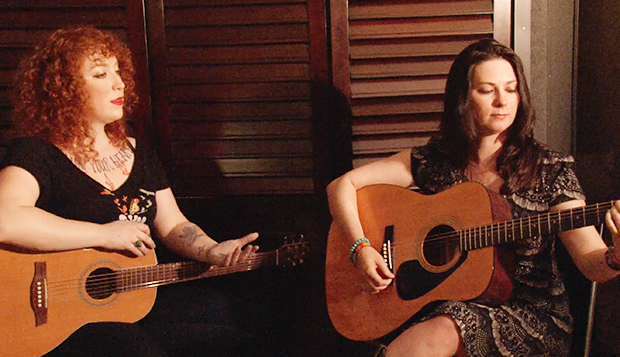Lesson: Get Better Faster with Lily Maase, Part 5

In this final installation of Get Better Faster, we apply everything we've learned about the mechanics of the instrument to that most challenging of hurdles for new guitarists –– bar chords.
Learning to play bar chords comfortably is a daunting but necessary part of every player's development; the key to mastering them successfully has a bit to do with understanding how to hold your hands, but even more to do with patience.
This one just takes time! But, you can make that time easier if you begin to understand the way bar chords actually work.
The biggest thing to remember when moving into more difficult positions on the guitar is this: If you feel like you're working too hard to play something, you probably are. Cramping, stiffness, and buzzy notes are better fixed by working smarter, not harder, and by making adjustments that remove the tension or struggle from your fingers rather than forcing them to do what you want.
With bar chords, you can take quite a bit of fatigue out of your hands by understanding that the bar happens to the side, instead of down. In other words, rather than mashing your finger straight down into the fretboard, it's considerably less strenuous to angle your finger to its side a bit and catch it up against fret, rather than try to force the strings all the way into the wood. Once you have the angle of the bar sorted out, everything else we've spoken about over the course of this series still applies. Keep your fingers on their tips, the ball mount of your index finger relaxed and drawing away from the neck of your guitar, and be conscious of the fact that it's incredibly easy to try to do these things by putting an extreme bend in your wrist.
Here's where the patience comes in: it takes a minute to develop a connection to all of these things separately, because in our day-to-day lives we tend to think of our wrist, thumb, fingers, and palm as just one thing--a hand! But, it's entirely possible to bend one finger and keep the others straight, or to curve your fingers without over-arching in your wrist or thumb.
Developing this level of awareness doesn't come overnight. But, my experience has shown that is possible for anyone who is patient, and is willing to sit down with the instrument every day. This is the true key to getting better faster--becoming aware of your hands, getting your fingers and thumb organized so they work with you instead of against you, and then getting after it a little bit, one day at a time.
All the latest guitar news, interviews, lessons, reviews, deals and more, direct to your inbox!
Learn more about Lily Maase at the following links:
Performance – www.lilymaase.com
Production – www.handmaidmusic.org
Composition – www.musicforrobots.org
Guns N’ Roses tribute band – www.rocketqueensnyc.com
